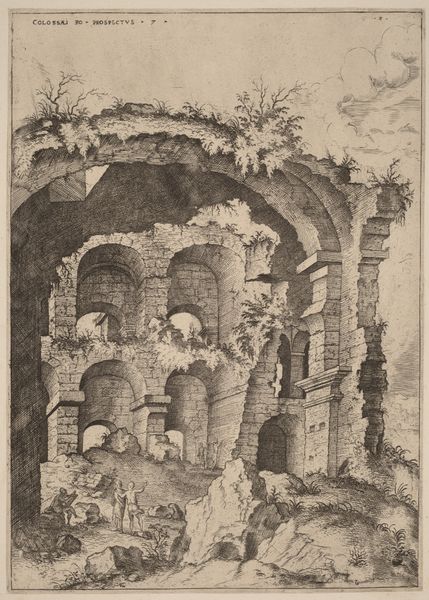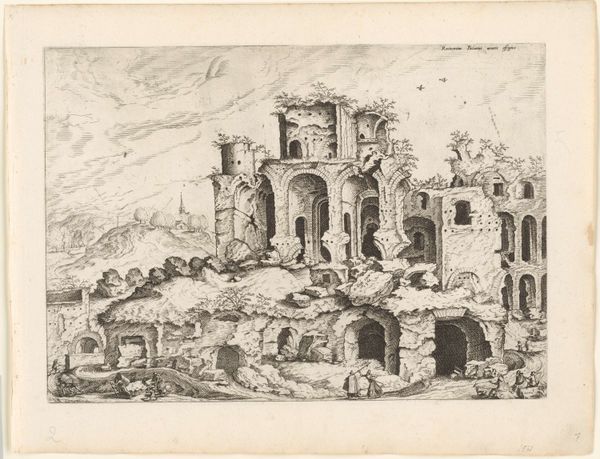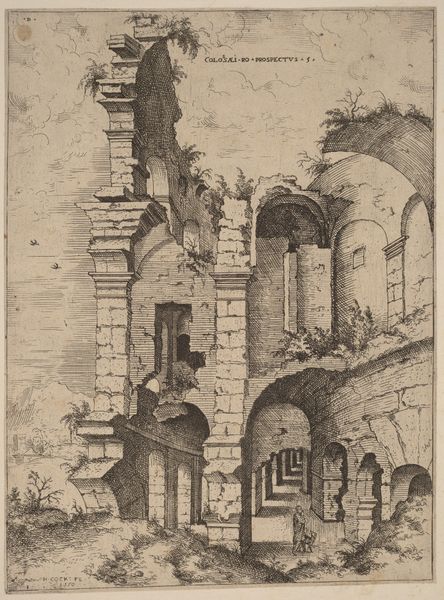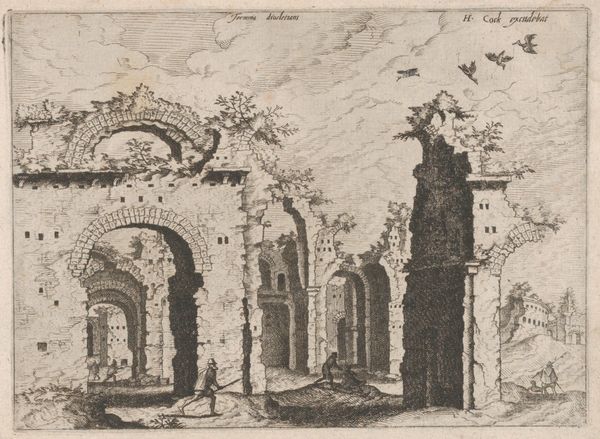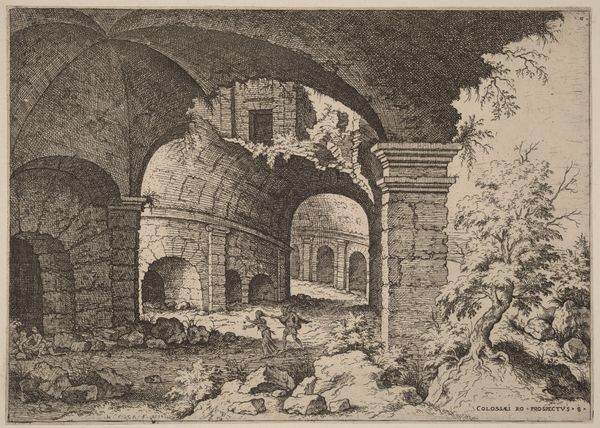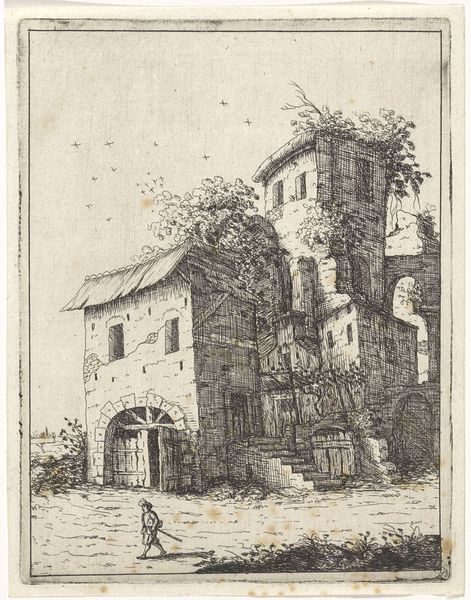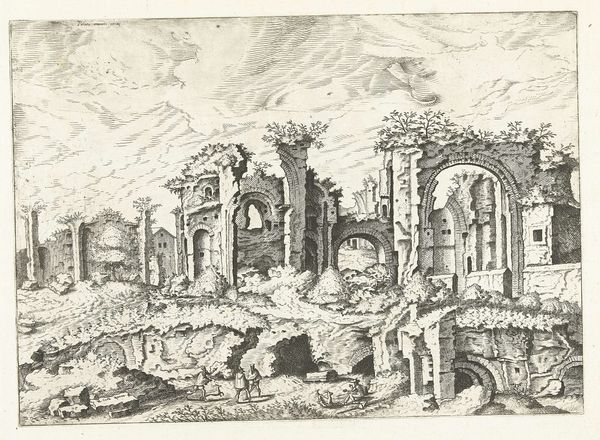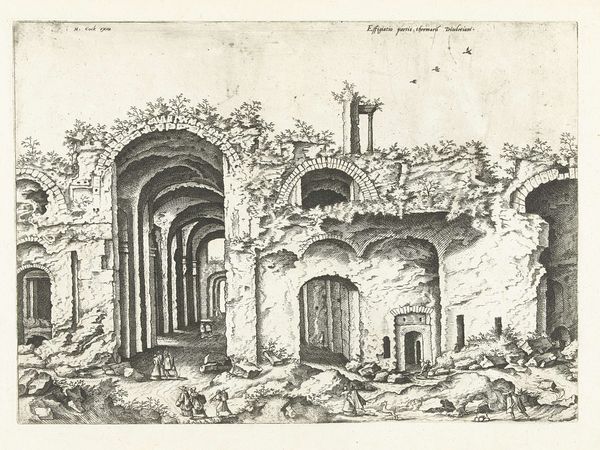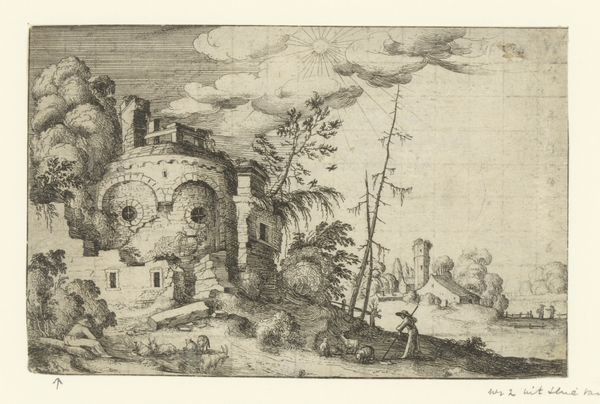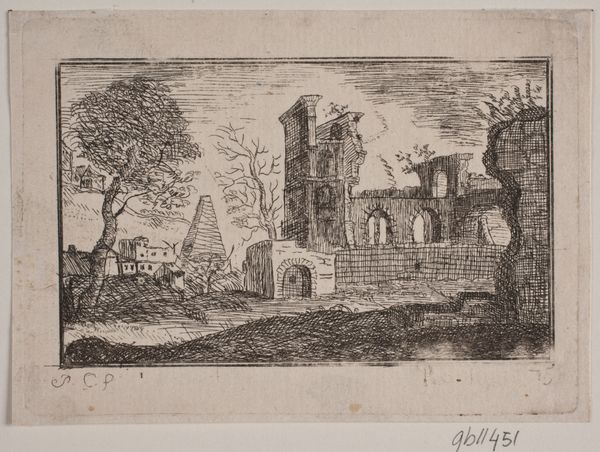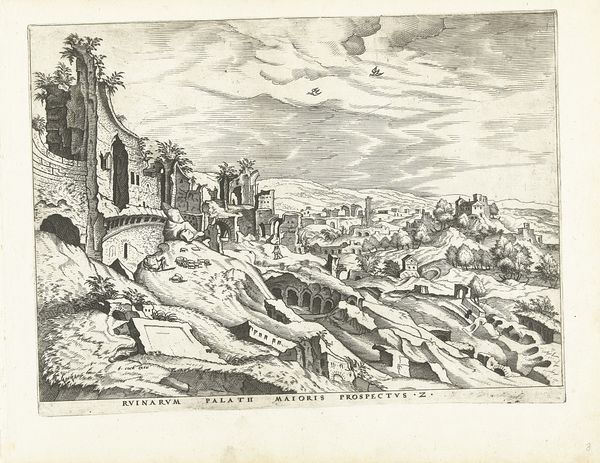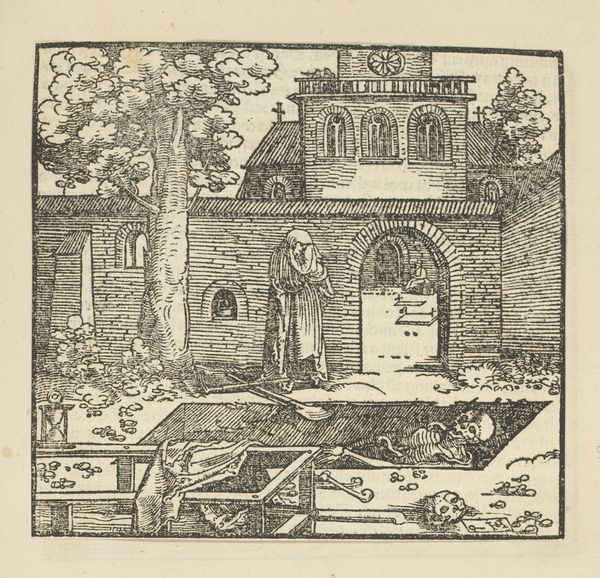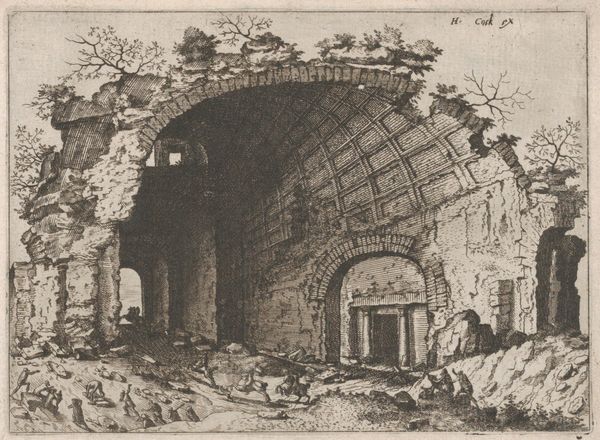
Horizontal Landscape with the remains of the Nymphaeum, mistakenly identified as the Temple of Minerva Medica in Rome, from the series 'Ruinarum variarum fabricarum delineationes pictoribus caeterisque id genus artificibus multum utiles' 1554
0:00
0:00
drawing, print, etching, engraving
#
drawing
#
pen drawing
# print
#
etching
#
landscape
#
11_renaissance
#
italian-renaissance
#
engraving
Dimensions: Plate: 5 7/8 x 3 7/8 in. (15 x 9.9 cm)
Copyright: Public Domain
Curator: Today we’re looking at Lambert Suavius's "Horizontal Landscape with the remains of the Nymphaeum, mistakenly identified as the Temple of Minerva Medica in Rome," created in 1554. It's an etching, a print, from his series, “Ruinarum variarum fabricarum delineationes pictoribus caeterisque id genus artificibus multum utiles.” Editor: The architectural ruins give off such a somber mood. It's also rather odd--like a theater set with decaying stagecraft or a gothic nightmare frozen in miniature, with a distinct and disturbing sense of forced perspective. Curator: Note how Suavius has masterfully deployed line and tone to create depth and texture. The precise hatching defines the crumbling stonework, contrasted against the softer, more organic forms of the vegetation, which appears as something almost parasitic on the architecture. Editor: This evokes potent images about the cycle of power—how empires rise only to decay, overtaken by the slow, persistent force of nature. Was Suavius commenting on the anxieties of his era and about cultural shifts? This feels like an anti-colonial statement almost, in a historical, retrospective sense. Curator: Well, these images were marketed toward painters and artists who used such prints as sources of inspiration, offering artists easily portable landscapes and architectural studies to draw upon. It provided, shall we say, readymade source material, available for integration into their larger works. Editor: The contrast is almost gothic, yet in its ruin, it points toward something very current about how societies rebuild and remake themselves. What gets preserved, what is remembered, what decays… Who controls the means of preservation, or of representing those means of destruction, and to what end? It seems almost a political allegory, here. Curator: Perhaps. Ultimately, though, the technical brilliance—the crispness of the lines, the gradation of tone—are what make this image so compelling, whatever other associations might occur to the contemporary imagination. Editor: It truly is a visual dialogue—the work, the viewer, history and current conversations meeting in a surprisingly powerful manner. The conversation continues in many new directions now.
Comments
No comments
Be the first to comment and join the conversation on the ultimate creative platform.
